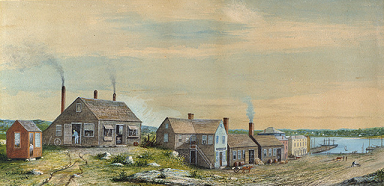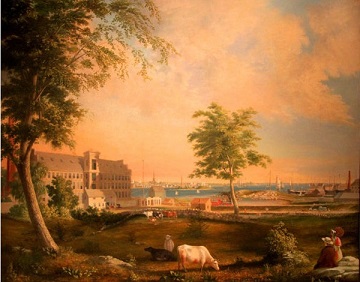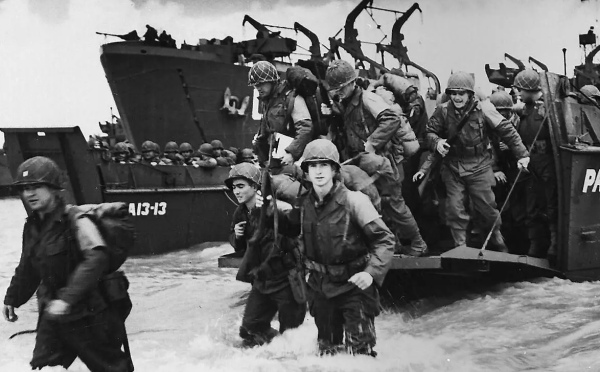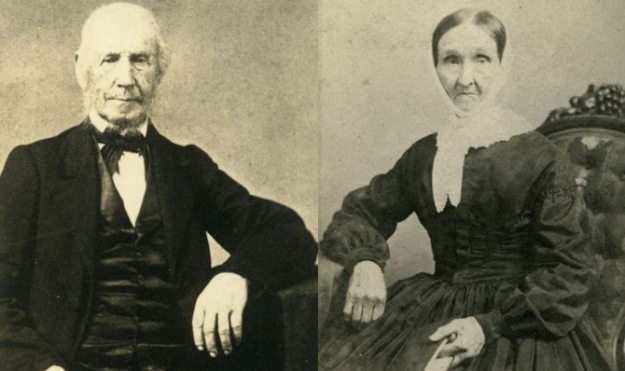5. Clifford
1790 turns up no one with the surname Clifford. The first notable Clifford to show up in New Bedford’s history is a John Henry Clifford born in 1809, shortly after New Bedford became a town. Mr. Clifford practiced law in New Bedford from 1827 until he became president of the Boston and Providence Railroad in 1867. He also became the Attorney General and 21st Governor of the Commonwealth of Massachusetts before passing away in 1867. He is definitely a candidate for the dubbing of Clifford Village considering there were no Cliffords in New Bedford before him. There is still a Clifford Street today. However, the only problem with this theory is that New Bedford was no longer a village or town in 1847 when it officially became a city. This is also one of the first places to have a post office well before 1890. In Rev. Elias Nason’s 1890 book “A Gazetteer of the State of Massachusetts” he mentions Clifford as a village then.

6. Germantown
Germantown?! Hard to believe but there was a large ethnic German presence in Bedford Village. To this day they are the largest ethnic group in America with 50 million people being able to trace their heritage back to Deutschland. That is a third of the entire German population outside of Germany. Massachusetts is ranked 30th with 400,000 today. The first wave of Germans started in the 1670s and they settled in nearby New York and Pennsylvania. In 1742 a thousand Germans came to Broad Bay, Massachusetts to do something they were well-known for: farming. Some local Amerindians weren’t too happy about this rather large community so they burned all their homes and farms down. They fled east and decided to no longer farm and and most took up fishing.
In the 19th century, there was massive immigration of some 8 million Germans to the New World looking for economic opportunities. New Bedford of the 19th century had plenty of opportunity and like many ethnic groups they banded together in small communities. One of those communities was dubbed Germantown and it was in the North End where today an estimated 5,000 people of German heritage still live. The most notable German in Bedford Village was artist Albert Bierstadt whose family came in 1831. Relevant to this article is his absolutely gorgeous “Gosnold At Cuttyhunk.” In the 1860s New Bedford had a Rheinberger Club or Sängerbund which was a German singing club as well as some German-only clubs like the Independent Order of the Red Men on North Second Street, and the Order of the Iron Hall on Purchase Street.
7. Howland Mill
Howland Mill Village was named so circa 1888 when Howland Mill Corporation erected factory housing for its workers in the southwestern part of the city. This wasn’t the first time a textile company had built factory housing, but it was the last. Unlike many of the other villages this village was not spurred on by the whaling industry. This “village” is hemmed in by Rockdale Avenue, Bolton Street, Hemlock Street, and Jenkins Street.
8. Jesseville
Jesseville is another village mentioned as presently existing in Rev. Elias Nason’s 1890 book “A Gazetteer of the State of Massachusetts.” This village is the toughest one out of the group to find anything about. In the 1790 census, the only Jesse found is Jesse Keen(e). There are two other Keens mentioned in that census, her father Ebenezer Keen Sr, who was a contemporary of William Tallman and an ex-military man, and her brother Ebenezer Keen jr. Is it likely that this ex-soldier and Tallman contemporary was prominent enough to get a community to accept his bright idea of naming it after his daughter? I really couldn’t answer that.

9. Kenersonville or Kennersonville
A Google search on Kennersonville doesn’t even turn up a full two pages of results for a whopping total of 16. I did however find, a few Kenersons who lived in New Bedford, alternate spellings of Kinnison and Kennison. A Kenerson family moved to New Bedford sometime in the 1850s from Maine. Samuel Kenerson’s wife was Caroline Taber, a name that needs no explanation. They had two children, a daughter Lena and a son Benjamin. Benjamin Kenerson was a road-master for N.B. & T Railroad and lived North of Rodman’s Farm, which is said to be near “…a railroad crossing north to Acushnet Village.” and at “…the line of County Road.” He had a son George, who was a N.B. Fireman. This little clan named their little spot Kenersonville.
10. Plainville
Old Plainville Road cuts right through today’s airport in the northwestern part of the city near Dartmouth. This village extended towards Hathaway Road to the south in which today is virtually all land. This village got its name, like many of the Plainvilles in the region, because…well there is a plain there.
 New Bedford Guide Your Guide to New Bedford and South Coast, MA
New Bedford Guide Your Guide to New Bedford and South Coast, MA









Wow…great in depth “short” history of NB Joe! I will use this as a reference in the future!
Joe, thanks for the infor and one question: many of the villages have little or no information. Where did you learn or suspect that there was a village by that name at all?
Thank you Freddie!
Danny, we have multiple sources to cull the information from, private and public. In the case of this article, I exhausted all of them! I went one source at a time and recorded every mention of a village. A few of the villages were only mentioned once and were in a directory with no info. Once I had a “keyword”, I circled back to all the documents I had already gone through and searched again. Winterville for example, has virtually nothing.
My hope and intention with many of these historic articles, is that the readers will share anecdotes and help fill in the holes.
Thanks for reading!
“Belleville” means “pretty town” in French. Were there settlers of French origin living there?
Hi Janice! This is likely represented by the large number of French-Canadians in the city.
that was great reading thank you
Nothing on Sassaquin?
Joe, in your section on Germantown, you mention the “Independent Order Of Red Men”. It caught my eye because of the similarity to the “Improved Order Of Red Men”, a Patriot Fraternal Organization said to have taken part in the Boston Tea Party and touts itself as the oldest Fraternal Organization in the U.S.
Jesseville School was a Quaker school on Linden St. The building is still there on the south side of Linden almost at the top near Summer St. It is an aparment house now. Dates from the 1830s .
Not a German -only club, the IMPROVED Order of Red Men were a fraternal organization (still in existance) that were an outgrowth of the original Sons of Liberty in Colonial (tea Party) times. They have a odge in Wareham today. My dad was a member for many years in New Beford when the RedMen hall (Kalife Hall) was on the NE corner of Summer and Linden Sts. (now an apartment) in the 50s and early 60’s.
You guys are a fount of information. Thank’s for the feedback and the improvements.
@former west ender, my primary concern was with those villages that existed at the beginning of New Bedford’s history, or at least in the first century or so. There are more recent “villages” that I did not include for that reason.
It is my understanding – and it may be incorrect – that Sassaquin is a relatively recent “village.” I’ll confess that I know very little about Sassaquin.
Cannondale…corner of rockdale and kempton.
Great piece~ I really enjoyed reading it! One of my favorite things about this city is that there’s so much history here, and much of it still visible in the architecture.
I thought the area in the west was Acushnet Village which Clasky or Common Park was known as Acushnet Park. There are condos on County St and Robertson St known as Acushnet Heights because that area was Acushnet Village. This is what I have heard over the years. It may be wrong
You do excellent work. Great story.
What about the sassaquin area? How did that name come about and where did those boundaries start and end?
Thanks again gang. I sincerely appreciate the comments. Some of these articles require a lot of reading and research. Sometimes it takes an hour or two to confirm just one fact/sentence. Your enthusiasm makes it all worth it.
@Karen: Acushnet Village refers to the early name of Acushnet proper.
In the 18th century when Olde Dartmouth was yet to be broken up and New Bedford was yet to be a city, there were 4 primary population centers which were pragmatically sectioned because of the river: Bedford, Fair-Haven, Long Plain and Acushnet Village – which included Rochester up to 1747 I believe. These population centers were all in “Dartmouth.”
In 1787 New Bedford, separated from Dartmouth. New Bedford at that time included Fair-Haven and Acushnet Village up. New Bedford/Fairhaven/Acushnet remained “New Bedford” up to 1812 when Fairhaven separated. Acushnet became its own entity in 1860 leading up to the Civil War. However, Acushnet continued to be called Acushnet Village even into the 1900s.
The area that you mention may colloquially be called Acushnet Village today because of its proximity to Acushnet Avenue – but all historical documents, atlases included refer to Acushnet as Acushnet Village. Map: http://www.historicmapworks.com/Map/US/8868/Acushnet+Village/New+Bedford+1881/Massachusetts/.
I’m open to the possibility that there was a second Acushnet Village, however I just haven’t seen it mentioned in historical documents. Of course, there are thousands and it would be easy enough to miss it!
@Cindy, when it comes to Sassaquin, I had an extremely difficult time finding much info or history or even much mention that it is indeed a “village.”
What little mention of Sassaquin in historical documents revolves around the pond (also known as Myle’s Pond) and the Sachem it was supposedly named after. Sassaquin is always referred to as a pond (and an early open air school) and not a village. I think what may be the case here, is that Sassaquin is an unofficial residential village and when giving directions it’s an easy geographical landmark.
I find this interesting, because I was always under the impression that it was a village. I will continue to dig!
Sassaquin was once called Clifford and is still Clifford on maps. I have letters of my moms with the address being. ____ Broadway, Clifford, ma. Broadway later became Sassaquin Ave. and Clifford, Sassaquin. So it may be the Clifford Village because we had a Post Office just up the street. Very interesting writings. Glad I came across it.
Great read! Regarding #11. I think you meant to end with Rockdale Ave. not Street. Also about #15, there is also a Winterville Rd. Off Rockdale Ave. facing Rural cemetery.
Do you know any history about the Padanaram Ave area in New Bedford? I wonder if it was named that as the road to Padanaram Village? I read somewhere that Padanaram was a village in the bible. I do know that the whole street was owned by Patrick Sweeney who used it as a dump, then sold off lots to his friends. I also wonder why this area has an 02740 zip code when there is a 02744 post off yards away. I read that it was more prestigious to have the 02740 zip code, so the map lines were skewed. All interesting info I think….
Hi Peggy! Thanks for correction and kudos.
Padanaram was named by Laban Thatcher who found some similarities between his life and the biblical Laban. Padanaram, is not a local Amerindian word, but is actually Aramaic and means “Field of Aram.” I went in depth about Padanaram in an article on all of Dartmouth’s villages that will be published subsequently.
Curious anecdote about Patrick Sweeney. Thanks for sharing. I’ll have to dig a little.
I think the Padanaram Avenue lot sales were in 1944 if I recall the deeds correctly. Every lot was 45’ wide. Patrick Sweeney sold them off by word of mouth. They went quickly and many people he knew were upset they didn’t get one. He even donated two waterfront lots to the city to be used as beach access for the lots on the non-waterside of the street. It’s on all the deeds of every lot he sold. Most people were fearful of hurricanes and only built small summer beach houses. Over the years the city tried to sell off the lots as surplus property to be rid of the liability. Most times a neighbor would see the legal notice and we would band together to stop the sale. We would be told it was put up for sale in error. As the years went by one lot slipped through and was sold. The buyer legally has to allow anyone to walk through his yard. To date it hasn’t been built on.The other lot remains but has eroded over the years. There is a chain across it for safety. My father built a retaining wall on his property when I was a kid. Bushels and bushels of intact glass bottles were dug up about three feet down! I’m the older generation now so I pass on this info from my grandfather, dad and personal experience.
Wow. What a goldmine of information, Peggy! Very much appreciated!
East of Rockdale ave and Carter Elimentary…..South of Durfee St……West of the old dump, there was a huge
flat rock that was in a wooded clearing As a kid, we would climb and play in this area often.
The rock from the memory of a child would have been ar least 15 feet long and 10 feet wide.
The rock in question for Rockdale Ave. might be Sullivan’s Ledge. The ledge was used as a quarry on Hathaway Road before it became a industrial waste dump site. The ledge extends from the 195/140 ramps to near the intersection of Rockdale Ave. and Wilbur St.
I grew up on Coggeshall Street and our backyard backed up to a Club that known as German Club (that was on Adams st.) There were Germans, Polish, French in the area and little church St. Boniface known as the German church,
Clifford Post Office. 1907 N. B. Directory Acushnet Ave. James Davis, Postmaster.
I remember the building with the sign. West side of Avenue. There was Clifford Chapel near Churchill Street area.
Shawmut Post Office Plainville Rd near Shawmut Ave. Plainville Charles B. Phillips,postmaster
From a family of Poles I remember going to weddings and events at the German club on Cedar Grove between State and Purchase Sts. Also a large population of Poles lived in the area of Cedar Grove, Blackburn St, Kilburn St etc. Not to be confused with the Mickiwicz Club on Purchase.
There’s a rock with a plaque on Rockdale Ave right across from the old Keith near Roger’s St or before you take the fork down to the high school. It’s been there since I was a kid and for the life of me I can’t remember what the plaque says! It’s a little island like in the middle. Sometimes there are flags with it?